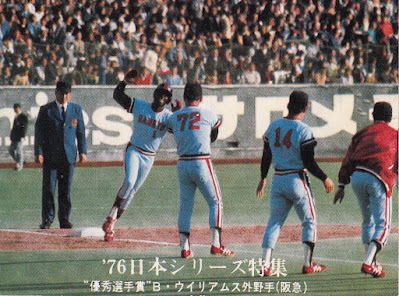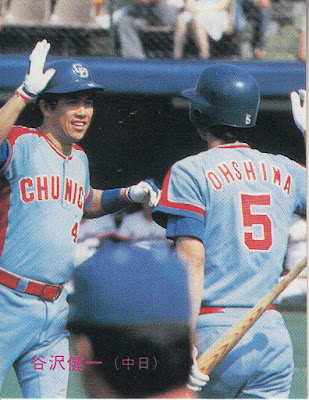2021 BBM Fusion Set Summary
Size: 144 cards numbered 1-99, TH01-TH24, 601-621
Cards Per Team: Variable
Team Card Theme: N/A
Number Of Leader Cards: 24
Checklists: None
Subsets: 1st Version Update (21)
Inserts: First Pitch Ceremony (29), Great Record (24), Legendary Player (12), Phantom (12, #'d to 25), Esperanza (24, #'d to 50)
Memorabilia Cards: There are four different types of autographed card available - "Team Pack Version" (cards in the style of the format for the autograph cards in the player's team set), "Autograph", "Cross Sign" and "Picturesque". There are two versions of autographed cards for the "First Pitch Ceremony" cards as well - the "silver paper" version is the more rare of the two.
Parallels: 12 regular player cards have a "secret" alternate photo version. "Title Holder" cards have two parallels - "silver paper" (#'d to 100) and "silver paper + holo PP" (#'d to 50). "Great Record" insert cards have two facsimile signature parallels - "silver" (#'d to 100) and "gold" (#'d to 50). "Legendary Player" insert cards have two parallels - "silver" (#'d to 100) and "gold" (#'d to 50). "Ceremonial First Pitch" cards have five parallels - "Holo PP" (#'d to 200), "Silver Paper" (#'d to 150), "Gold Paper" (#'d to 100), "Silver Paper + Holo PP" (#'d to 50) and "Gold Paper + Holo PP" (#'d to 25).
Notable Rookies: Yoshinobu Mizukami
BBM's Fusion set was released about a month ago. This set functions as a combination update and season summary set. It's typically BBM's final set each year - this year it came out on Christmas Eve!
Last month I had a conversation with twycchang, a Japanese card collector from Taiwan, in which he suggested that I start treating BBM's Fusion set as part of their "flagship" set. I had already been thinking along those lines so when he made the suggestion, I decided to go ahead and formally do it - "formally" in this case meaning that I did the little summary thing at the beginning of this post and I added all the Fusion sets to the BBM Flagship set list on
my "Set Index" page.
Fusion is a kind of confusing set. I've referred to it in the past as a Franken-set and as a "four-headed" monster as the past editions of the set had four separate parts - player cards, Title Holder cards, 1st Version Update cards and Ceremonial First Pitch cards. It's slightly easier this year as BBM made a somewhat major change to the set - the Ceremonial First Pitch cards are short-printed and no longer considered part of the base set (I listed them above in the "Inserts" section but that's not really accurate). As a result of this, the base set size is back to 144 cards instead of the 160+ it had been the past two years. If the 29 Ceremonial First Pitch cards were part of the base set it would have had 163 cards in it.
The bulk of the set is the player cards. There are 99 of them. This is one of the parts of this set that is really confusing and I kind of struggle every year to explain it. 48 of these cards feature a player who achieved some notable feat during the 2021 season while the remaining 51 cards feature a different player (usually an OB one) who achieved some sort of related feat sometime in the past. Probably the best way to illustrate this is with an example. Card #23 in the set commemorates Yuki Matsui of the Eagles notching his 150th career save on May 9th. Matsui was the youngest player to reach this milestone as he was 25 years and six months old at the time. This broke the existing record of 26 years, nine months set by Yasuaki Yamasaki of the Baystars. Card #24 in the set shows Yamasaki celebrating his 150th save on July 17th, 2019.
 |
| #23 (left) and #24 (right) |
The cards are ordered by the date of the event during the 2021 season. The 2021 player always comes first in the checklist and then is followed by one (or more) OB players. As usual I only know the significance of a handful of the cards such as Masanori Ishikawa winning at least one game in 20 consecutive seasons, Ryoji Kuribayashi converting 22 straight save opportunities and Kosuke Fukudome becoming the oldest NPB player ever to hit a home run. There's a couple milestones like Yoshiyuki Kamei's 100th home run although most of the major milestones are commemorated in the "Great Record" insert set. Other players featured include Seiya Suzuki, Tetsuto Yamada, Takashi Ogino, Tsuyoshi Wada, Kazuma Okamoto and Hiroya Miyagi. Several players - Kuribayashi, Yosunobu Yamamoto, Munetaka Murakami, Hayato Sakamoto, Teruaki Sato and Shugo Maki - have two cards in the subset. Departing from most other BBM sets the cards are not split evenly between the teams - the Fighters only have one (Hiromi Itoh) while the Swallows have nine.
 |
| #92 |
 |
| #68 |
 |
| #80 |
 |
| #45 |
 |
| #10 |
 |
| #15 |
The "other" players, the players who did their achievements prior to 2021, include Hall Of Famers Hideki Matsui, Isao Harimoto, Koji Yamamoto, Shigeo Nagashima, Keishi Suzuki, Kazuyoshi Tatsunami, Tetsuya Yoneda, Tomoaki Kanemoto, Koichi Tabuchi and Yutaka Ohno. Other players include Motonobu Tanishige, Takahiro Arai, Akinobu Okada, Takeshi Yamasaki, Yoshitomo Tani, Daisuke Yamashita, Atsunori Inaba and Hisanori Takahashi. There are two cards each for Kyuji Fujikawa, Takahiro Ikeyama and Isamu Kida. Yu Darvish is the only player in the set who is currently playing in MLB. Yukihiko Machida is included in the set - this is his first BBM card that I know of since the 2003 Sluggers set.
 |
| #99 |
 |
| #67 |
 |
| #46 |
 |
| #73 |
 |
| #71 |
 |
| #75 |
The Title Holder cards are a throwback to the Leader cards BBM used to include in their flagship sets between 1991 and 2013. There are a total of 24 cards (numbered TH01 to TH24) that include the leader (or leaders) in twelve statistical categories for each league - Batting Average, Home Runs, RBIs, Hits, OBP, Stolen Bases, ERA, Winning Percentage, Wins, Saves, Hold Points and Strikeouts. If a player leads the league in multiple categories then he has multiple cards in this subset - for example, Yoshinobu Yamamoto has four cards since he led the PL in ERA, Winning Percentage, Wins and Strikeouts. If more than one player tie for the lead in a category they all appear on the card. There are three cards that show multiple players including the PL Stolen Base card which shows all four players who tied for the title.
 |
| #TH11 |
 |
| #TH20 |
The 1st Version Update subset contains 21 cards for players who were not included in the 1st Version set or the 2nd Version sets's "1st Version Update" subset, at least not for the team they ended the season on. Actually only 20 of the 21 players fall into this category because for some reason BBM included Masaki Tanigawa of the Fighters again after including him in the 2nd Version set. This is the second time BBM has repeated a player in this subset - the first was Duente Heath in
2018. Players in this set include a number who were traded during the season (Sho Nakata, Ginjiro Sumitani, Takuma Katoh, Yuki Kuniyoshi, Sohei Katoh and Fumikazu Kimura), a couple late signing foreign players (Cesar Vargas and Enny Romero), several players who graduated from being
ikusei (Kenjiro Tanaka, Yuki Watanabe, Tomohisa Ohzeki and Takuya Takahama), a player who signed with the Marines after spending most of the season in indy ball (Tetsuya Kokubo) and a player who returned mid-season from playing in MLB (Shun Yamaguchi). Since one of the
ikusei graduates - Yoshinobu Mizukami of the Lions - was a 2020 draftee, BBM put the "rookie" icon on his card. As you can probably guess from the fact that there's 21 cards, there are not an even split of the cards between the 12 teams - the Marines have five cards while there are none for the Swallows or Carp. These cards are numbered in continuation of the 1st and 2nd Version sets so they pick up at card #601 and go to #621.
 |
| #608 |
 |
| #615 |
 |
| #616 |
As I've done for the past couple years, I picked up the two non-premium insert sets for this set. The first one is the 24 card "Great Record" set which commemorates some milestone reached by two players from each team during the 2021 season. This includes Takumi Kuriyama's 2000th hit, Hayato Sakamoto's 250th home run, Munetaka Murakami's 100th home run, Yuki Yanagita's 200th home run, Masahiro Tanaka's 100th NPB win, Yoshio Itoi's 300th stolen base and Naoya Masuda's 150th save. Sometimes it's a struggle to find a second milestone for a team so the Lions other card (after Kuriyama) is for Yutaro Watanabe's first win.
 |
| #GR07 |
The other insert set is the 12 card "Legendary Player" set which simply has one OB player from each of the 12 teams (with a player from Kintetsu instead of Rakuten). The big names in the set are Nagashima, Fujikawa, Ohno, Tatsunami and Inaba. All the players in the set appear in the regular set although they may be shown with a different team - Tabuchi is a Tiger in the regular set but a Lion here, Junichi Kashiwabara is a Nippon-Ham Fighter in the set but a Nankai Hawk here.
 |
| #LP01 |
As always you can see the entire set (including the inserts and Ceremonial First Pitch cards) over at
Jambalaya.





















































